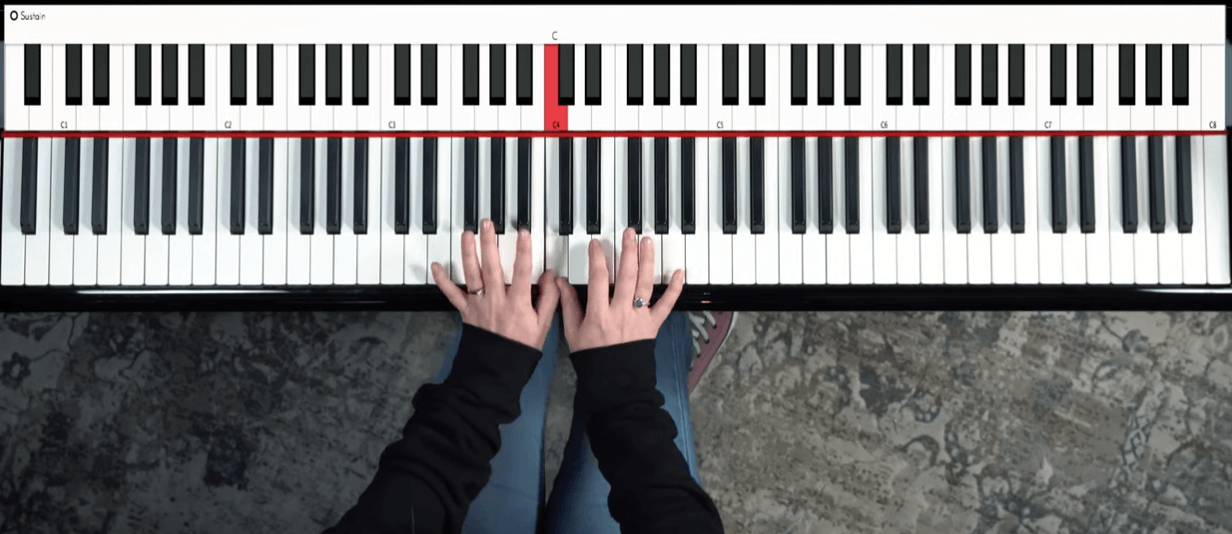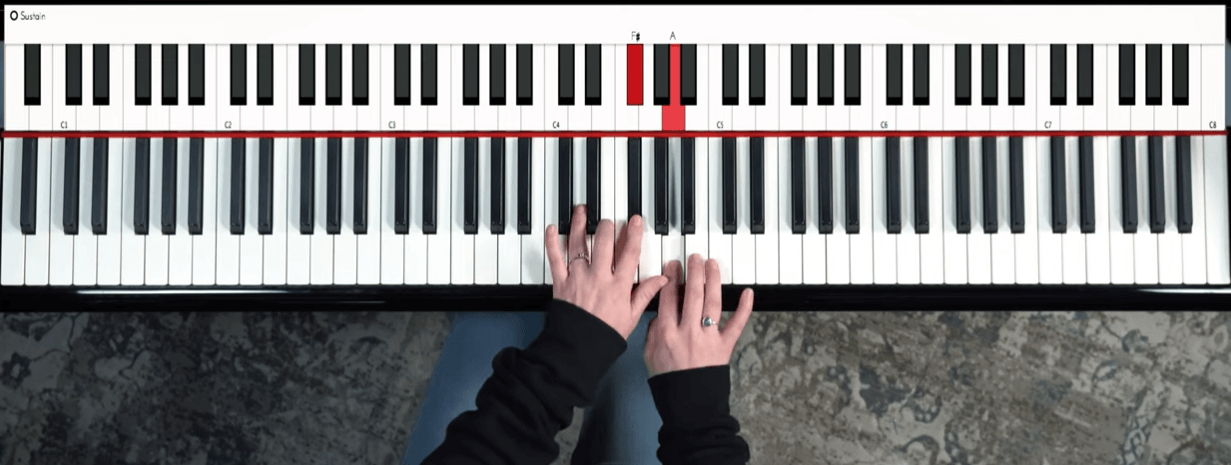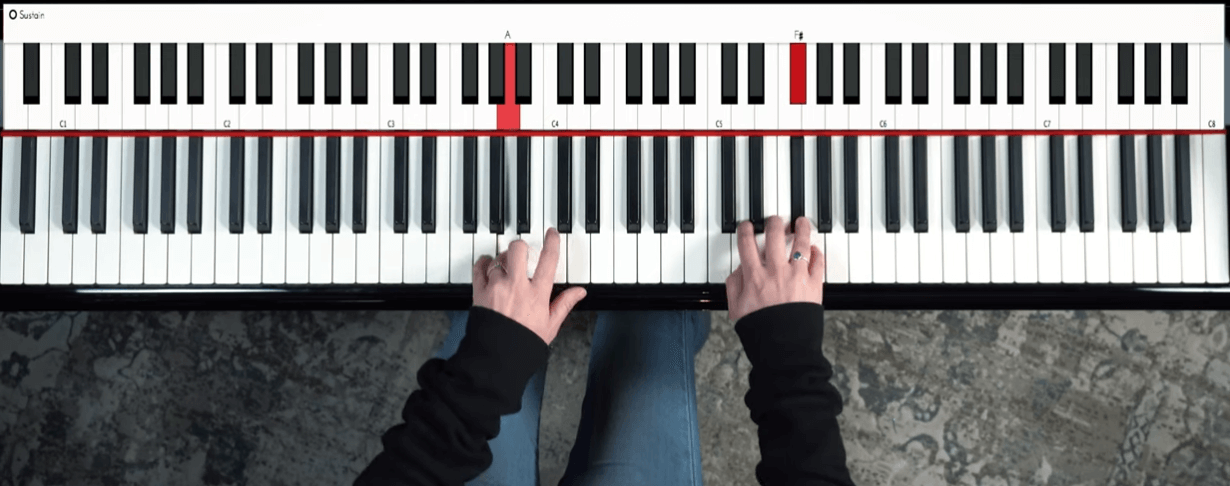My background is classical music.
I grew up practicing and playing classical pieces for years, and part of that practice was contrary motion scales.
The concept of contrary motion scales is very simple. Instead of playing a scale with both hands going up or down, you play the scale with both hands going up AND down.
Let me explain. We’ll use C major because it’s easy.
With contrary motion scales, you start on the SAME note. Both thumbs begin on middle C.

Now you play the C major scale going UP with your right hand while playing it going DOWN with your left.
It will feel weird at first — but it’s actually pretty easy to play it in C because the fingering is identical for both hands. You’ll be doing the thumb tuck and crossover at the same time.
But of course, once you move out of C major, things get a little more complicated.
This is where it can get difficult and you really have to concentrate. When you play a scale with sharps or flats in the normal way (up or down hands together) the black keys come at the same time.
But in contrary motion scales, they come at different times. Let’s look at G major as an example.
Your thumbs will both start on G. Then your right hand will play UP and your left hand will play DOWN.
Well, the first note below G is an F#. So you need to remember to play that with your left hand while playing an A with your right. So it will look like this:

A bit more difficult, right?
And as you continue playing the scale you’ll need to remember to play F# in your right hand while playing A in your left.
So that will look like this:

And then it’s the same thing going down. The whole time your hands are moving in different directions.
That’s why it’s called “contrary motion”.
I did NOT like practicing contrary motion scales when I was growing up. I didn’t like the technique and I didn’t understand why I was having to play them.
But like most things, I didn’t realize their value until much later.
Contrary motion scales are fantastic to help you build hand independence. So many songs have sections where your hands will move in opposite directions, and if you practice these scales that won’t be a problem for you.
You’ll also develop a deeper understanding of the scales that you’re playing. You have to think about them a lot more and look at them in a different way.
And it will help you get comfortable playing the piano with your hands far apart on the keyboard.
Learning and practicing contrary motion scales definitely helped me to become a better and more complete piano player, which is why I think they’re a fantastic exercise to include in your regular practice.
Just remember to start slow!
Lisa Witt has been teaching piano for more than 20 years and in that time has helped hundreds of students learn to play the songs they love. Lisa received classical piano training through the Royal Conservatory of Music, but she has since embraced popular music and playing by ear in order to accompany herself and others. Learn more about Lisa.


By signing up you’ll also receive our ongoing free lessons and special offers. Don’t worry, we value your privacy and you can unsubscribe at any time.
We use cookies for traffic data and advertising. Cookie Policy »